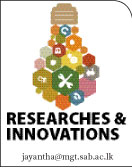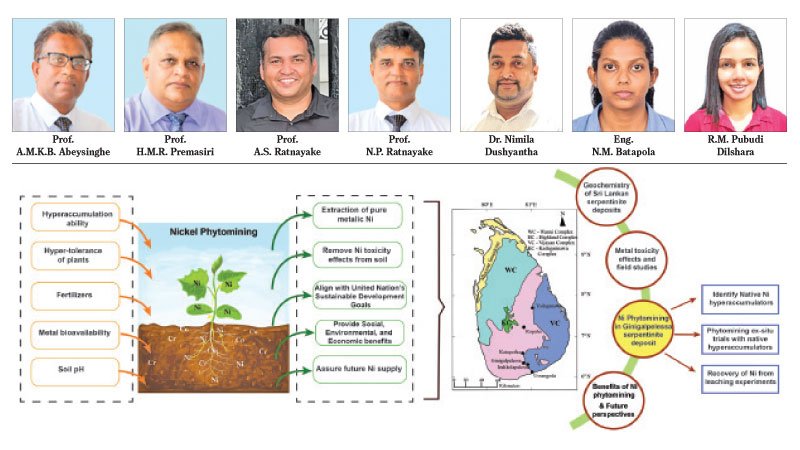 Global climate change has driven the world toward decarbonisation, leading to the widespread adoption of green and renewable technologies. In the wake of the Paris Agreement, the transition to clean energy systems in both the energy and mobility sectors has accelerated the demand for critical metals such as cobalt, lithium, manganese, and nickel. These non-ferrous base metals are essential for electric battery technologies, and demand is expected to rise even further.
Global climate change has driven the world toward decarbonisation, leading to the widespread adoption of green and renewable technologies. In the wake of the Paris Agreement, the transition to clean energy systems in both the energy and mobility sectors has accelerated the demand for critical metals such as cobalt, lithium, manganese, and nickel. These non-ferrous base metals are essential for electric battery technologies, and demand is expected to rise even further.
In this context, Ni is gaining increased attention as a substitute for cobalt in lithium-ion battery production. Major battery manufacturers, including Samsung SDI and Panasonic, as well as electric vehicle (EV) original equipment manufacturers (OEMs) like Tesla, are shifting toward the production of “cobalt-free” batteries to enhance energy density. Additionally, Ni plays a crucial role in wind turbines and nuclear facilities. Recent studies forecast that global Ni demand for battery production will increase significantly, from seven percent to 41 percent , by 2040. However, the depletion of high-grade Ni deposits and the surging demand in the metal market are driving exploration into Ni recovery from low-grade resources such as mine tailings, e-waste, and Ni-rich soils. Researchers increasingly focus on identifying potential Ni sources and developing eco-friendly recovery methods to meet future demand.
In this context, a research team from the Department of Earth Resources Engineering at the University of Moratuwa has pioneered the exploration of Ni recovery from serpentine soils in Sri Lanka. As a resource-rich country, Sri Lanka has six serpentinite deposits,namely, Ginigalpelessa, Ussangoda, Indikolapelessa, Yodhaganawa, Katupotha, and Rupaha,which are rich in Ni. The average Ni concentration in these deposits’ ranges from 0.4percent to 0.8percent and, in some cases, can exceed 1.7percent , surpassing the global cut-off grade for Ni (1.5percent -3percent ). These soils are enriched with valuable metals such as cobalt (Co) and chromium (Cr). However, serpentinite deposits have often been overlooked due to their low economic importance and the toxicity of elevated concentrations of Ni, Cr, and manganese (Mn). Although past studies have highlighted the need for soil remediation from these metals, no detailed studies for economic recovery havebeen conducted until recently. Consequently, the research team at the University of Moratuwa has investigated the potential for Ni recovery from Ginigalpelessa serpentine soil using a method known as phytomining. This eco-friendly metal recovery technique employs Ni-absorbing plants (Ni hyperaccumulators) to extract metals. In Ni phytomining, plants cultivated in Ni-rich soils are harvested at maturity and then burned to produce Ni-rich ash for Ni recovery.
In this research, soil geochemistry and native serpentine flora were studied in over 31 sampling locations covering the entire deposit to identify Ni concentrations in the soil and select suitable plant species for phytomining trials. Pot trials for phytomining were carried out using the Ginigalpelessa serpentine soil with three native plant species: Apluda mutica, Crotalaria verrucosa, and Imperata cylindrica, along with Brassica juncea as an introduced species. The plants were harvested during their flowering stage and burned to produce Ni-rich ash.
The study emphasises that native Ni hyperaccumulators grown in serpentine soil show significant potential for Ni phytomining and soil remediation. The ash from these plants contains between 3,000 and 8,000 mg/kg of Ni, indicating the feasibility of implementing Ni phytomining in local deposits. The Ni recovery experiments yielded nearly 50-60 percent pure Ni from Apluda mutica ash. The research team also optimises recovery percentages to establish a commercially viable Ni industry in Sri Lanka. Furthermore, during the phytomining trials, Ni, Cr, and Co toxicity in the soil was reduced by 20-40 percent , 20-70 percent , and 50-85 percent, respectively. As the first Niphytomining research conducted in Sri Lanka, the team identified two promising Ni-absorbing plant species: Apluda mutica and Crotalaria verrucosa. These species can potentially be used in future phytomining studies and help remediate Ni toxicity from contaminated soils. The success of these preliminary trials represents a significant advancement toward establishing a nickel phytomining industry in Sri Lanka. The research team envisions scaling operations through extensive field trials and refining hydrometallurgical techniques to maximise nickel recovery.
Ni phytomining has recently gained popularity and is primarily implemented in Indonesia, Malaysia, Australia, the USA, and Albania serpentinite fields. These countries have established metal farms that cultivate Ni-absorbing plants like Alyssum murale. Experimental studies have transitioned from laboratory scale to field applications, successfully recovering over 90percent pure nickel sulfate salts. Additionally, the biomass from these plants can be used to recover potassium, which can then be returned to the fields as fertiliser. Phytomining has emerged as an environmentally and socially acceptable technology for recovering Ni from serpentine soil, addressing the supply risks of Ni in the metal market. Furthermore, it aligns with the United Nations Sustainable Development Goals (UN SDGs), particularly Goal 12: Responsible Consumption and Production. Although this concept is new to Sri Lanka, it promises economic benefits while removing toxicity from the soil.
In conclusion, phytomining is an innovative approach for extracting nickel from soil using Ni-absorbing plants, offering numerous economic, environmental, and social benefits. It is influenced by global nickel prices, demand, and recent technological advancements, which have significantly increased, making phytomining a viable alternative for resource extraction. The cost-effectiveness of this method varies based on local environmental conditions and shifts in the global market. Additionally, it creates job opportunities, promotes responsible land use, and supports local communities by generating extra income and encouraging environmental stewardship.
Phytomining provides a sustainable solution by minimising soil disturbance, enhancing biodiversity, and contributing to carbon sequestration. It relies on solar energy, reduces waste, and restores soil fertility, presenting a greener alternative to conventional remediation methods. This eco-friendly, low-risk approach positions phytomining as a sustainable and socially responsible resource extraction method. The study highlights the potential of Sri Lanka’s serpentinite deposits to play a crucial role in the global supply chain for critical metals. The country could emerge as a leader in sustainable mining practices with continued support from academic and industrial sectors.
This Ni phytomining research was conducted as a postgraduate study by Pubudi Dilshara, an M.Phil. student at the University of Moratuwa, under the supervision of Prof. A.M.K.B. Abeysinghe, Prof. H.M.R. Premasiri, and Senior Prof. N.P. Ratnayake from the Department of Earth Resources Engineering and Senior Prof. W.T.P.S.K. Senarath from the Department of Botany, University of Sri Jayewardenepura. The research was also supported by Prof. A.S. Rathnayake and Dr. N.P. Dushyantha from UwaWellassa University, and B.D.N.M. Batapola from the University of Moratuwa.









